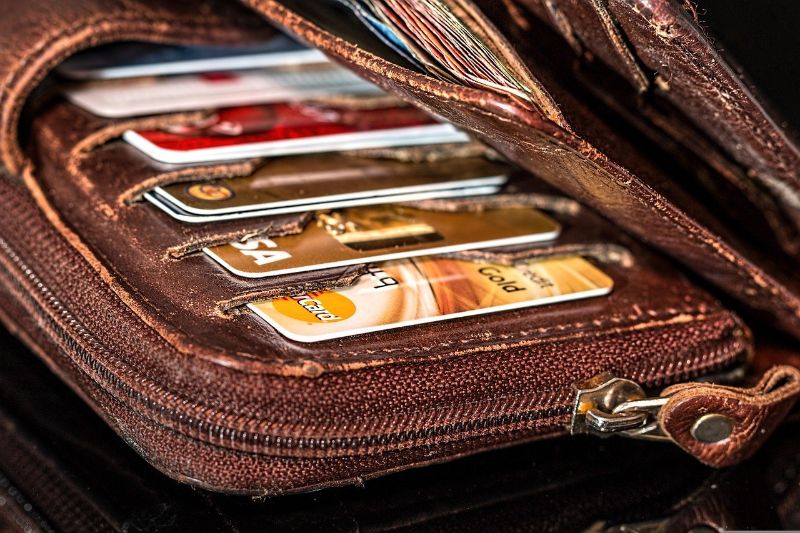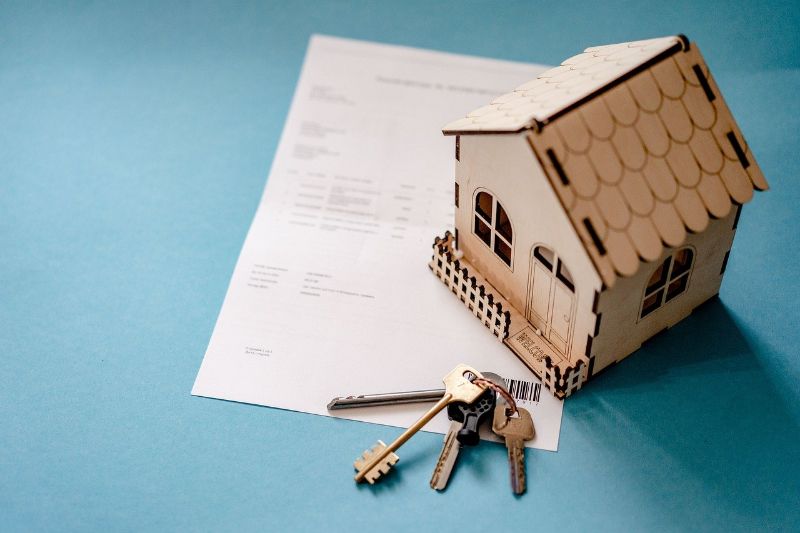Are you dealing with good or bad debt? Do you want to know how to leverage good debt to better your finances? This good debt vs bad debt comparison guide is all that you need to do just that.
Debt! Credit! Loans! These are terms that have changed millions of lives. But, not everyone has the same experience with the terms. Some people have had the worst experiences, where their financial status plunged, while others have created great wealth from debt.
As a result, this has, for years, ignited the debate of whether debt is a good and bad thing. Many people want to know whether the loans they have or the ones they intend to take will result in good or bad debt.
The truth is there is no definitive answer when defining good to bad debt. It all stems down to how the debt or loan is used and how it will affect your future finances. Also, does the debt make financial sense after factoring in the loan's principle and interest payments?
Does this sound too complicated? Well, it shouldn't! Today, we will explore more about good debt vs bad debt to help you get a more clear picture of what it all means.
So, straight to the basics…
Good Debt Vs Bad Debt: What is Debt?

Debt is any amount of money owed by one person to another or to an institution. This usually happens when you take out a personal loan from a financial institution like a bank or use a credit card. The debt will need to be repaid over time, and almost always, with interest.
Whether good or bad debt, the money will, in most cases, improve your life in one way or the other. However, while a good debt's benefits are long-lasting, those ones from a bad loan are short-lived and eventually damage your financial health.
How do I mean? Assume that you take an auto loan. The car will certainly improve your mode of transport as it's convenient. However, with time, the car will depreciate and start demanding repairs, insurance, and other expenses that might cost you in the long run.
On the other hand, if you borrow money and use it to invest in a business, after a few years, there's a possibility that the business will be bigger. Subsequently, this will improve your life in the long run, especially because you now have your own business.
Now, let's see the major difference between these two options of borrowing money;
What is Bad Debt?
Let's start with the bad news first! I always tend to prefer it this way.
Bad debt is a loan taken to finance consumption. In other words, it's the debt used to buy things that don't appreciate with time but depreciate instead.
Common examples of such items include clothes, electronics, and vacations, among others. Essentially, these are items that you'll use for some time and then dispose of them or replace with new ones.
With time, the value of these items diminishes, and in most cases, they become worthless. So, if you take a loan to finance their purchase, you might end up using most of your income to repay the loan without getting any returns later on.
Characteristics of Bad Debt
These traits will help you identify bad debt:
- It usually has high-interest rates. This means that a large chunk of your income will go into repaying the loan, leaving you with little money to finance other important things in your life. A good example here is a high-interest credit card.
- It's consumer debt. This is any debt used to buy items such as clothes and electronics. While these items will add happiness or comfort to your life, they don't add any financial value.
- Repayments are higher than your budget. If the monthly payment exceeds what you can afford, then that's bad debt. For instance, if that credit card's monthly repayment leaves you with little or nothing to save, invest, or set aside for emergencies, it's certainly bad.
- Has unclear terms. Any loan with terms and conditions that are difficult to understand is bad debt. The lender is likely trying to take advantage of you.
- It doesn't offer any tax benefits. The interest on good debt is usually tax-deductible. However, this isn't the case with bad debt.
Bottom line: Bad debt is a financial liability. You should avoid bad debt as it doesn't offer any long-term benefits but only puts a strain on your finances – unless it's totally unavoidable.
See related: Private Equity Firms Ready For Higher Pursuits
Examples of Bad Debt

Be aware of these types of loans:
1. Credit Card debt
Firstly, most people use credit cards for consumer items. And some of these credit cards come with pretty high-interest rates. As such, you not only make purchases of items that add no financial value to your net worth but also pay huge interest for it.
Now, that's a double tragedy to your finances. If you want to benefit from a credit card, ensure you look for one with a low-interest rate. Also, use your credit card debt to buy assets whose value appreciates.
Lastly, you can use the card to improve your credit score and increase your chances of getting even larger personal loans for more investments. So, avoid getting into too much debt as it might become harder to repay and damage your credit score.
2. An Auto Loan
If you are buying a car for personal use, it's most likely to be bad credit. Why? The car will depreciate with time, and your finances will be strained for the entire loan repayment period.
Also, auto loans have high-interest rates since they are secured by a depreciating asset (the car). As such, you end up paying more for a car that costs relatively lower if you pay for it in cash.
3. Payday Loans
Payday loans are only good when you need that money ASAP. Otherwise, their interest rates are on another level and the repayment period is quite short (usually by the next payday).
While they are easy to acquire, their APR (Annual Percentage Rate) can go as high as 400%. For example, if you borrow a payday loan charging $15 for 100 in two weeks, you are paying an annual APR of around 400%. This doesn't make any financial sense to your finances.
What is a Good Debt?

Not all debt is bad debt. Some debt can be used to improve your financial situation.
In simple terms, good debt is one that someone takes to invest. You put the money somewhere, either in a business or in assets, anticipating higher returns or appreciation in the future.
Assuming you took a loan and used it to buy stocks. If the company does well, in the long run, your stocks might appreciate. Selling the stocks now gives you more money than what you invested.
Another example of good debt is taking out a mortgage. A mortgage allows you to finance the purchase of a home. In most cases, people take out this loan so they can own a house after making monthly payments for some years. The value of the house appreciates with time as the property market grows.
Characteristics of Good Debt
If you want to identify a good debt, here are some traits and characteristics you should look for:
- Good debt usually has low-interest rates. This helps ensure that you don't use most of your income to repay the loan, affecting your financial future.
- Good debt is used to finance investments, such as stocks or real estate property, that appreciate with time. These investments grow over time, and when cashed in, they generate more money than earlier invested. It offers long-term benefits.
- Good debt should have a fixed repayment period. This ensures that you can plan and budget for the loan repayment without worrying about unforeseen circumstances.
- It should have easy-to-understand terms. The agreement between you and the lender should be straightforward. There should be no hidden charges or conditions that might be difficult to understand.
Bottom line: Good debt is an essential tool that can be used to finance investments and other growth opportunities. However, just like any other type of debt, it should be used wisely.
Examples of Good Debt
As we've earlier mentioned, whether a loan is bad or good mainly depends on its intended use. Let's look at some examples of good debt.
1. Mortgage loans
A mortgage is one loan that certainly falls under the good debt category. Why? There are two reasons behind this.
One, it gives you a nice place to stay, which ultimately gives you some peace of mind. Two, with the rising cost of housing, especially in the urban areas, you get to pay for a house that you will finally own. Now that's progress!
Of course, taking a mortgage means that you'll be in debt for a very long time. And that's what many people fear. However, the interest on this loan is usually tax-deductible, which helps to lower your overall tax liability. In addition, mortgages have relatively low-interest rates when compared to other types of loans.
If you manage to fully repay the mortgage, you'll not only be a homeowner, but your net worth will also have gone up. And the reason is that the value of the house will be higher than it was when you first took the mortgage.
2. Student Loans

This type of loan helps you finance your education and improve your future prospects. A college or university degree can certainly open up many professional and financial doors for you. So, if you're planning on furthering your studies, a student loan can help make that possible.
The good thing about student loans is that it mainly comes with flexible repayment terms. This means that you can choose a repayment schedule that's in line with your current income. Also, the interest rates on these loans are usually lower than other types of loans.
However, this can also turn into bad debt if the student loan debt is not repaid for one reason. For instance, if you drop out of college before attaining that degree, you will not get a job matching the amount of loan you took. As such, you'll be paying for a loan that didn't help better your future.
3. Small Business Loans
Sometimes, opening and operating a new business is not easy. But when done right, this can be the start of a journey to immense wealth creation.
Small business loans help you start or boost your business. They enable you to finance a business venture that has the potential to grow and generate revenue in the future.
Of course, taking a small business loan comes with some risks. For instance, the business may not take off as planned, in which case you'll be stuck with the loan. However, if the business is successful, you'll be able to repay the loan and even make some profits.
4. Some Cars Loans
While most auto loans are usually categorized as bad credit, some might actually be good debt. For instance, if, besides using your car for personal purposes, you also use it for business purposes, the interest on the loan is tax-deductible. This can help to lower your overall tax liability.
Also, if the car is a necessity and not just a luxury, it can be considered good debt. This is because it's an asset that you'll be using on a daily basis. Just make sure that you choose a vehicle that's within your budget and one that won't strain your finances.
FAQs
What is the difference between good debt and bad debt?
The primary difference between the two is that good debt helps you to generate income or grow your wealth, while bad debt only puts a strain on your finances.
Is all student loan debt considered good debt?
No, not all student loans are considered good debt. Only those loans offering long-term benefits, such as allowing you to get that dream job, can be seen as good debt.
Can small business loans be classified as bad debt?
Yes, small business loans can sometimes be classified as bad debt if the business venture doesn't take off as planned. This can land you in a worse financial situation than you were previously in.